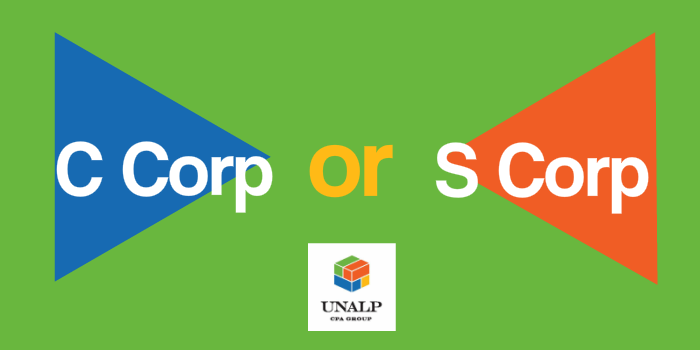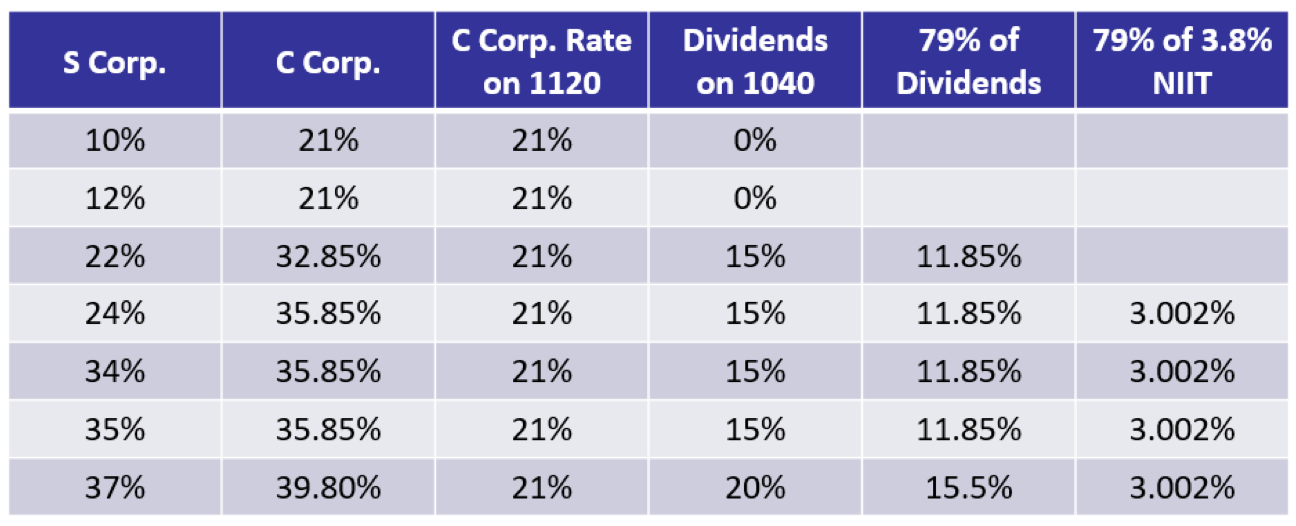The new 21 percent tax rate for the C corporation is very attractive at first blush and you may wonder if this would be a better entity of choice. As a tax CPA, I have been getting these questions from some clients.
The table below gives you a snapshot on how much you would pay in taxes. This depends on your Form 1040 tax bracket. In the S corporation column are the tax rates by the brackets that apply to individuals. In the C Corp column is the percentage of taxes you would pay if you were a C Corp (it adds the last four columns).
How Does the Table Work?
Let’s take an example if you are in the 34 percent tax bracket. Let’s also say that you have $100,000 in profit (or taxable income).
If you operate as an S corporation you will end up getting a K-1 that has $100,000 of profits for the year to include as part of your individual 1040 return (this is called a pass-through since the $100,000 in profit is not taxed at the S Corp level, but passes through to your individual return). The profits on the K-1 pass-through to you pay your Form 1040 taxes at the 34 percent rate, for a total tax on your S corporation profits of $34,000.
If you operate as a C corporation, then the math gets a bit more involved. The profit is first taxed at the C corporation level at a rate of 21 percent (for a tax of $21,000 that the Corporation pays). This leaves $79,000 of the $100,000 in profits available. These will be distributed as a dividend to you.
Tips From a Tax CPA
To get this money, you then must endure the double taxation (double taxation means it was already taxed at the C Corporation level and it will be taxed at the individual level on the form 1040). This starts with the tax on the dividend of 15 percent. This creates an $11,850 tax ($79,000 x 15 percent).
Your tax bracket will also trigger the net investment income tax (NIIT) that applies because of your dividend income. The NIIT is $3,002 ($79,000 x 3.8 percent).
As a C corporation, your total federal taxes on the $100,000 of income are $35,852, which consists of the following:
1. C corporation taxes of $21,000
2. 1040 dividend taxes of $11,850
3. 1040 NIIT of $3,002
Based on the same $100,000 in profits, operating as an S corporation results in $34,000 to the government compared with the C corporation, which pays $35,853.
There are no NIIT on the S corporation profits if the shareholder materially participates in the S corporation. In other words, the NIIT does not apply to the pass-through income derived from active business operations.
Based on the table I have presented you can see that the S Corp will always beat the C Corp where the taxpayer materially participates in the operation.
Based on tax considerations alone, there is no reason to switch from an S Corporation to a C Corporation.
Talk to a Tax CPA
If you’re still not sure which option is right for you, Unalp CPA Group is here to help. Contact us today by calling (435) 938.6389 or send a quick message by clicking this link. Let’s chat!



Recent Comments